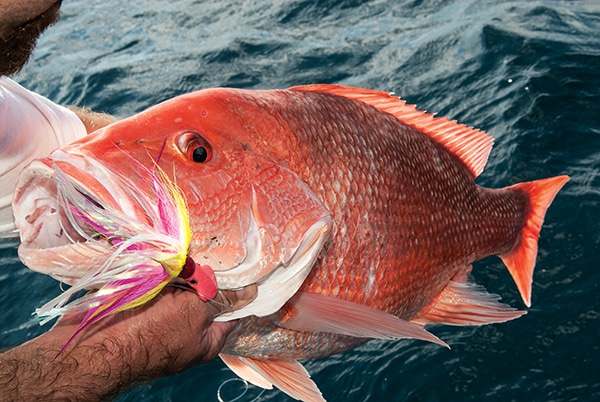
conservation fishery managemenr
How well I remember Frank Woolner, the first editor of Salt Water Sportsman, saying, “There is nothing new under the sun.” That response was uttered when I would bring something to Frank’s attention, thinking that it was a novel idea. He was usually right, although his comment was more matter of fact than meant to discourage creative thinking. This month’s topic is not a new concept, but it is one that could be of great importance to recreational anglers.
In any number of these columns, I have suggested, urged, and even demanded — for what little good it did — that allocations for recreationally important species that are divided between recreational and commercial users be revisited on a regular basis. By and large, fisheries managers have ignored this process, even though federal guidelines require the Regional Fishery Management councils to address this issue.
Tough Nut
Having been on the New England Fishery Management Council, I fully understand that dealing with allocation is one of the thorniest issues that managers deal with. It causes the greatest amount of angst and usually vitriolic response from stakeholders. It is a process of creating, at least to some degree, winners and losers. So, managers tend to ignore this task. One of the other issues is how the baseline is determined: Should it be catch history only or should it include some other elements?
It makes sense that all allocations should be revisited on a periodic basis, as many determinants change over time. It is the National Oceanic and Atmospheric Administration’s (NOAA) policy, which states that “harvest allocations to fishery sectors should be revisited on a regular basis.” Certainly, two of the prime examples of this need to revisit past management actions are summer flounder on the East Coast and red snapper along the Gulf Coast. The demographics, user groups and economic benefits derived from these resources have changed dramatically since the original allocations were put into place based on catches back in the 1980s. While these are two species that should change in a direction that would benefit recreational users, it needs to be stated that this might not always be the case. It is more than likely that recreational users will lose allocation in other species.
Forward Motion
As this is written, Sen. David Vitter (R-La.) has drawn a line in the sand with NOAA. He has threatened to hold the nomination of Dr. Kathryn Sullivan to be NOAA’s new administrator until he receives strong assurances that NOAA’s regional administrators would require the Regional Fishery Management Councils to revisit and update the allocations of stocks to sectors. While he is interested in the general process, Sen. Vitter is highly focused on red snapper in the Gulf of Mexico (GOM). This is one species that has been the poster child for management turmoil. Setting the allocations to better reflect what takes place in the fishery today would go a long way toward resolving the ongoing access problems experienced in the recreational fishery along the GOM.
While this might not solve all of the issues with the management of red snapper, it will certainly be an improvement. There will likely be continued saber rattling to change the Magnuson-Stevens Act to accommodate greater flexibility. There was discussion of action on reauthorization for this past fall. Due to the ongoing turmoil in Washington D.C., this has been pushed into 2014. This is an election-cycle year — one that may well see some more turnover — so it is anyone’s guess what will actually get done. My own sense is that the Gulf Council should take a hard look at what was done by the Mid-Atlantic Council to incorporate more flexibility in the management process for recreational fisheries.
Consider Efficiency
What I would also like to see is some more creative thinking on how baselines for allocation are determined. Most are simply based on catch history for a number of years and averaged out. While it’s obvious there are substantially more users in the recreational stakeholder group, they use the least-efficient gear, as well as gear that has a minimal impact on benthic habitat. It would make a lot more sense if the allocation process took into consideration some level of economic benefit and demographics across the user groups. This would better incorporate the NOAA Science Center Social Sciences divisions into the management process.
It is my feeling that Sen. Vitter’s efforts are right on target. In the past, I have supported this re-examination of allocations. In fact, where I could, I tried to get that kind of language into management actions at the NEFMC. This process has to be something more than just looking at the existing allocations and saying, “Good enough.” It needs to be a comprehensive process that incorporates more than just catch history. Unless the process gets some creative changes, it will surely be déjà vu, all over again.









